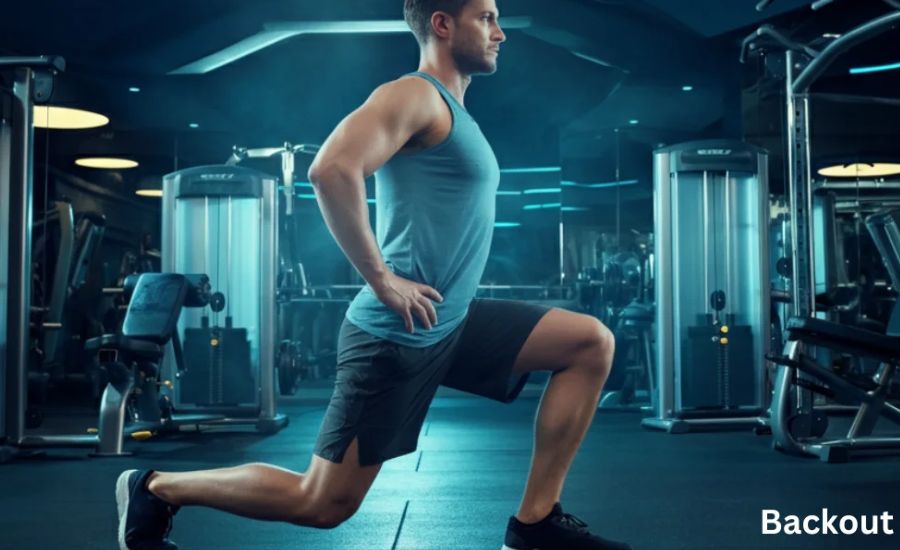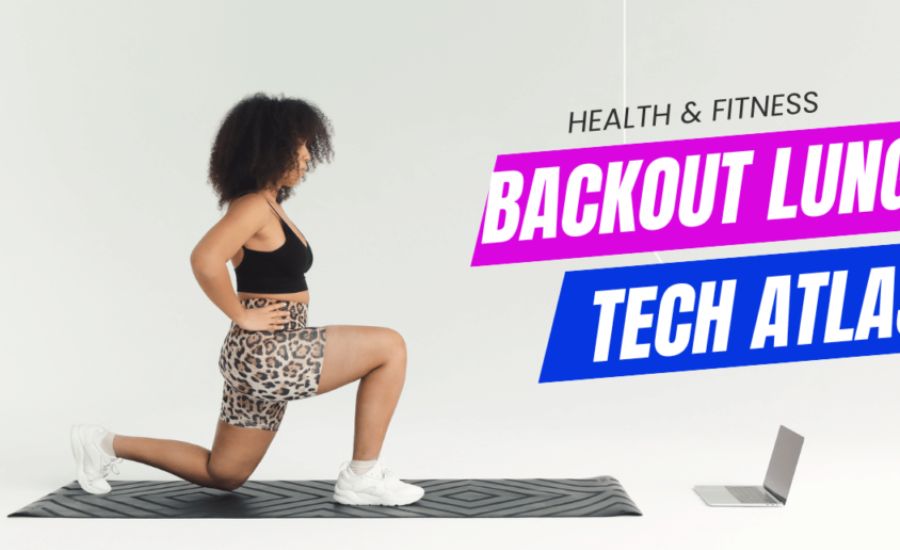Introduction To Backout lunge tech atlas
The Backout Lunge Tech Atlas is a dynamic and versatile exercise that blends strength training, stability work, and mobility enhancement into one powerful movement. It is intended to improve balance, encourage functional fitness, and target important lower-body muscle groups. Gaining proficiency in this exercise can revolutionize your training regimen, regardless of your level of expertise. It can help you maximize your performance as an athlete or establish a solid foundation as a fitness novice.
We’ll cover all you need to know about the Backout Lunge Tech Atlas in this comprehensive guide, from its special advantages to detailed instructions for ensuring correct form. We’ll also answer frequently asked questions and offer practical guidance to help you optimize outcomes and lower your risk of harm. Are you prepared to advance in your fitness career? Let’s begin!
What Is the Backout Lunge Tech Atlas?
The Backout Lunge Tech Atlas is a modern twist on the classic lunge, tailored to enhance lower-body strength, stability, and overall balance. This innovative exercise combines the mechanics of a reverse lunge with refined, advanced movement techniques, delivering a highly effective full-body workout.
Unlike standard lunges that primarily focus on building muscle, this variation emphasizes functional fitness by improving joint mobility, enhancing coordination, and helping to prevent injuries. Its ability to engage multiple muscle groups while promoting movement efficiency makes it a go-to exercise for athletes and fitness enthusiasts seeking to elevate their performance.
Understanding the Backout Lunge Tech Atlas

By using a backward step in place of a forward one, the Backout Lunge differs from the conventional forward lunge. In addition to working important lower-body muscles like the quadriceps, hamstrings, and glutes, this reversal exercise puts greater strain on your core to keep you balanced and stable.
The Backout Lunge is a great option for athletes and fitness enthusiasts looking to improve functional strength and mobility because it requires more coordination and control. You may enhance muscle coordination, hone your movement patterns, and develop a stronger, more resilient body by including this exercise in your program.
Key Muscles Worked by the Backout Lunge
A lower-body workout that targets the muscles needed for walking, jogging, and keeping proper posture is the Backout Lunge Tech Atlas. The main muscles used in this movement are broken down as follows:
The front of the thigh’s quadriceps
This exercise heavily uses the quadriceps, particularly while pushing back to a standing position. During the upward portion of the lunge, these muscles are in charge of sustaining the majority of your body weight and straightening the knee.
Glutes (Buttocks)
The gluteal muscles, particularly the gluteus maximus, are heavily engaged in the Backout Lunge. They work to stabilize the hips, power the upward motion, and control the descent, making them a key player in the movement.
Hamstrings (Back of the Thigh)
Unlike traditional forward lunges, the Backout Lunge places more emphasis on the hamstrings. These muscles aid in managing the movement’s downward phase and stabilizing the knee joint. Smooth and effective action is ensured by the hamstrings working in tandem with the glutes.
Calves
Pushing off the ground activates the calf muscles, particularly the gastrocnemius and soleus. They are essential for maintaining balance and control because they stabilize the ankle and aid in upward propulsion.
Core Muscles
Your core is essential for maintaining balance and keeping the torso stable during the Backout Lunge. A strong, engaged core helps prevent excessive leaning and supports proper posture, allowing for better control and effectiveness throughout the exercise.
Benefits of Adding Backout Lunges to Your Routine
A great workout that offers several advantages to improve your fitness journey is the backout lunge. It’s an effective complement to any strength-training regimen since it targets important lower-body muscles like the quadriceps, hamstrings, and glutes.
Improved Stability and Balance
The Backout Lunge’s backward stepping motion tests your equilibrium and engages your core muscles to help you maintain good posture. In addition to strengthening your stomach, this enhances your general coordination, which is essential for both injury prevention and sports performance.
Adaptability for Every Level of Fitness
The Backout Lunge’s versatility is one of its best qualities. By changing the stride length, adding resistance with weights, or introducing pace, you can modify the action to fit your fitness level or objectives.
The movement pattern of the Backout Lunge closely mirrors daily activities like walking, climbing stairs, or bending down. By building functional strength, this exercise helps you perform these tasks more efficiently while reducing the risk of strain or injury.
Improved Hip and Leg Flexibility
Your range of motion increases with each Backout Lunge repeat, increasing your hip and leg flexibility. This can eventually aid in reducing stiffness, enhancing posture, and promoting more mobility in general.
A Comprehensive Lower-Body Exercise
The Backout Lunge improves strength, endurance, and flexibility in a single action by targeting several muscle groups at once. It works well for strengthening your lower body and using your core for stability.
Including the Backout Lunge in your training regimen offers a complete combination of strength, stability, and mobility advantages, making it a great option for enhancing performance and fitness.
Tips for Perfecting the Backout Lunge Tech Atlas
The Backout Lunge Tech Atlas is a highly effective exercise, but it can be tricky to master without proper guidance. Here are some practical tips to help you perform the movement with confidence and maximize its benefits:
Start with Bodyweight First
If you’re new to the Backout Lunge Tech Atlas, it’s important to begin without adding weights. Focus on perfecting your form and understanding the mechanics of the movement. Starting slow helps build a strong foundation and minimizes the risk of injury.
Check Your Form Using a Mirror
A mirror can be an excellent tool for feedback. To guarantee correct alignment, pay attention to your posture. Throughout the exercise, your back should be straight and your knee should stay in line with your ankle. The secret to avoiding strain and getting the best outcomes is maintaining proper form.
Make progress gradually.
Introduce resistance to the exercise gradually after you’ve mastered the bodyweight version. As your strength increases, up the intensity from light dumbbells or resistance bands. While lowering the possibility of overloading, gradual progression guarantees that your muscles remain challenged.
Use Your Core
Throughout the exercise, keep your core active to preserve stability and balance. Maintaining good posture, avoiding swaying, and improving control throughout each repetition are all made possible by having a strong core.
Focus on Controlled Movements
Avoid rushing through the exercise. Perform each lunge with a controlled tempo to fully engage the targeted muscle groups and ensure proper activation. Controlled movements also help enhance balance and coordination.
By following these tips, you’ll not only master the Backout Lunge Tech Atlas but also unlock its full potential for improving strength, stability, and functional fitness.
Facts
- Exercise Overview:
- The Backout Lunge Tech Atlas is a variation of the traditional lunge, combining strength, stability, and mobility into a single movement.
- It emphasizes functional fitness, improves balance, and enhances coordination.
- Primary Muscle Groups Worked:
- Quadriceps: Play a significant role during the push to a standing position.
- Glutes: Assist in hip stabilization and powering the upward movement.
- Hamstrings: Help stabilize the knee and control the descent.
- Calves: Stabilize the ankle and aid in upward propulsion.
- Core: Maintains balance, posture, and control throughout the movement.
- Benefits:
- Enhances lower-body strength, balance, and flexibility.
- Improves functional strength for everyday activities like walking and climbing stairs.
- Boosts hip and leg mobility, reducing stiffness and promoting overall flexibility.
- Adaptable for all fitness levels by modifying stride length, resistance, or tempo.
- Tips for Mastery:
- Start with bodyweight exercises to perfect form.
- Use a mirror for posture and alignment feedback.
- Progress gradually by introducing resistance.
- Engage your core for balance and control.
- Focus on controlled, deliberate movements for effectiveness.
Summary
The Backout Lunge Tech Atlas is a versatile and functional exercise designed to improve lower-body strength, stability, and mobility. This variation of the traditional lunge emphasizes controlled backward stepping, which activates major muscle groups like the quads, glutes, and hamstrings while challenging the core for balance. Suitable for all fitness levels, the exercise can be modified with weights or resistance to increase intensity. By incorporating the Backout Lunge Tech Atlas into your routine, you can enhance functional fitness, improve coordination, and reduce injury risks while achieving a more mobile and resilient lower body.
FAQs
1. What makes the Backout Lunge different from a regular lunge?
The Backout Lunge involves stepping backward rather than forward, which places greater emphasis on core stability and coordination while engaging the same lower-body muscles. This reverse motion improves functional strength and balance.
2. Who should perform the Backout Lunge?
The exercise is suitable for everyone, from beginners to advanced athletes. Its adaptability makes it accessible to all fitness levels. Beginners can start with bodyweight, while experienced individuals can add resistance for a greater challenge.
3. What are the key benefits of the Backout Lunge Tech Atlas?
- Builds strength in the quads, glutes, and hamstrings.
- Improves hip and leg flexibility.
- Enhances balance, posture, and core stability.
- Supports functional strength for everyday activities and sports.
4. How can I ensure proper form during the Backout Lunge?
- Keep your back straight and your knee aligned with your ankle.
- Use a mirror for posture feedback.
- Engage your core and focus on slow, controlled movements.
5. What equipment is needed for the Backout Lunge?
The exercise can be performed without equipment. To increase intensity, you can use dumbbells, resistance bands, or weighted vests.
6. Can the Backout Lunge help with flexibility?
Yes, regular practice of this exercise deepens your range of motion, promoting flexibility in the hips and legs while reducing stiffness.
7. How often should I incorporate the Backout Lunge into my routine?
It depends on your fitness goals, but 2–3 sessions per week are generally effective for building strength, stability, and mobility.
8. Is the Backout Lunge suitable for injury recovery?
It can be, but consult with a healthcare or fitness professional before adding it to your routine, especially if you have knee or hip issues. Proper form is crucial to avoid strain.
Read More information About Health At Provibes
